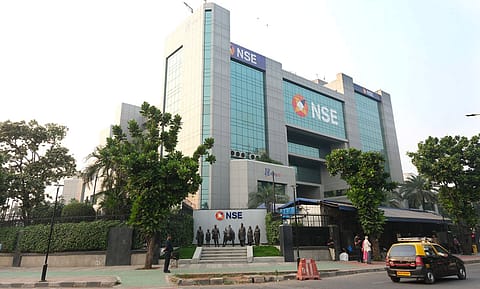Will PSU stocks continue to be the markets' favourite?
Before the markets entered into the sideways zone after September 2024, rallies across defence, railways, and capital goods PSUs had sent the indices buzzing

Till September last year, public sector undertaking (PSU) stocks led the bull run from 2020. Before the markets entered into the sideways zone after September 2024, rallies across defence, railways, and capital goods PSUs had sent the indices buzzing.
The Nifty PSE has grown over four times to close at 9,894 points on October 17, compared with 2,148 points around Diwali in 2020. Similarly the BSE PSU has grown over four and a half times to close at 19,982.76 points on Friday, compared with 4,388.31 points around Diwali in 2020.
However, in line with the other benchmark indices, the PSU indexes have also remained sideways in the past one year and are in negative over Diwali 2024. The Nifty PSE is down 9.2% from the 10,897 levels on October 15 last year. And the BSE PSU is down 3.92%. With the consumption-centric reforms, the question really is whether the PSU stocks will continue to be the markets’ favourite and attract the same investor interest they have managed to so far.
Brokerages are bullish on the PSU segments especially defence and banks. Angel One said in a blog on October 17, “The government has allocated a defence budget of ₹6.81 lakh crore for FY25-26, with 27% for capital expenditure. Defence production is expected to grow from ₹1.46 lakh crore in FY24-25 to ₹3 lakh crore by 2029 (CAGR ~20%), establishing India as a global leader in defence manufacturing.”
“By 2047, production is targeted at ₹8.8 lakh crore, exports at ₹2.8 lakh crore, with R&D spending at 8–10% of the budget, focusing on emerging technologies like AI, quantum computing, hypersonics, cyber defence, and autonomous systems,” it added.
It may be noted that the defence PSUs are bagging mega orders. HAL received orders worth ₹62,000 crore from the ministry of defence for the supply of 97 Light combat MK1A Tejas jets. “The company has opened its third manufacturing facility for Tejas at Nashik. With the opening of this plant, the production capacity of HAL for MK1 A Tejas will increase from 16 to 24, annually,” said HDFC sky in a note on October 17. It may be noted that with the current order will take HAL’s order book to ₹2.7 lakh crore by FY27.
Yet another defence PSU major BEL boasts an order book of ₹74,859 crore as on July 1, 2025. The Navratna PSU has inked a pact with the defence ministry worth ₹1,640 crore (excluding taxes) for the supply of defence fire control radars to the Indian Army.
Recommended Stories
These radars, designed by the DRDO and manufactured by BEL, provide effective all-weather defence against air threats. On bank PSUs, Motilal Oswal Financial Services points out that PSBs have sustained healthy RoAs, and with margins recovering in 2HFY26, and asset quality remaining stable, they are well poised to deliver steady returns in the coming years. “PSB sector profitability has reached a record high at ₹1.5 lakh crore and RoA has surpassed 1%. We estimate a 14% CAGR in aggregate earnings of our PSB coverage over FY26-28E. While NIM pressure may weigh on the near-term outlook, rising fee income, a gradual moderation in cost ratios, and healthy coverage levels will help to keep RoA stable at 1.0-1.1%,” said Motilal Oswal Financial Services in a recent note.
The railways, meanwhile, has registered record capex in H1 FY26 at ₹1.42 lakh crore. Capital expenditure by the ministry stands at ₹1,42,487 crore till September this year. Out of the total budgetary grants worth ₹2,52,200 crore for the current financial year, the overall capex utilisation by the Indian Railways stands at ₹1,42,487 crore, or 56.5%, which is the highest ever capex utilisation till date and may have a bearing on PSUs in the segment too.
